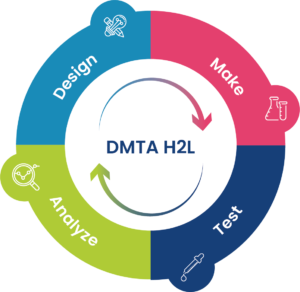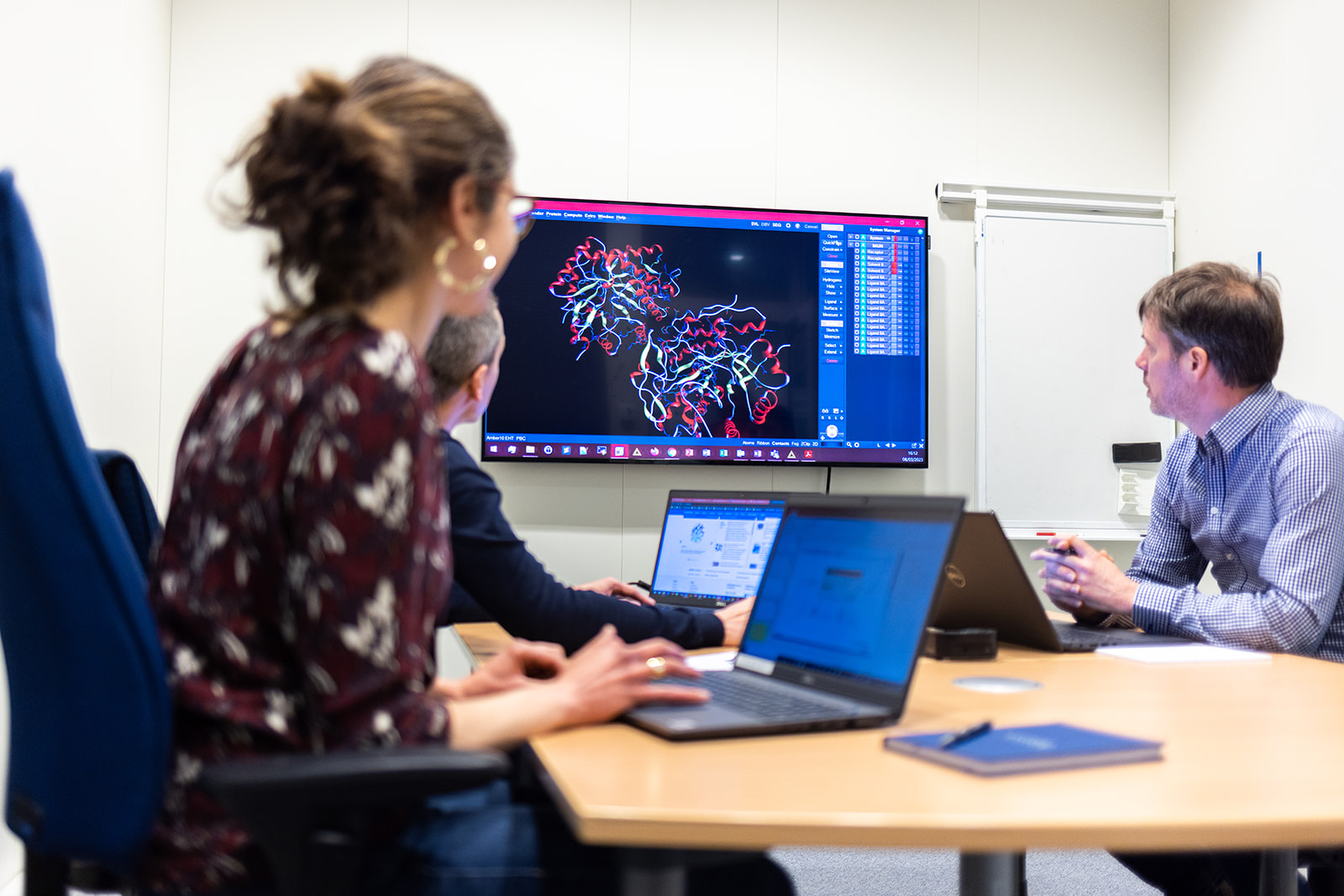


How does Computer Aided Drug Design (CADD) help medicinal chemists to optimise drug leads?
Sylvain Lozano, computational chemist, explains the important role these tools play in our drug discovery journey.
In the world of drug discovery, medicinal chemists play a pivotal role in developing innovative drugs. Their expertise lies in the art of designing and synthesizing molecules with the potential to treat diseases. However, the traditional trial-and-error approach to drug design can be time-consuming and very expensive. Fortunately, the advent of Computer-Assisted Drug Design (CADD) has revolutionized the field, empowering medicinal chemists with powerful tools to enhance their efficiency and productivity.
At Oncodesign Services, we’ve been putting a significant focus on how these tools can help our chemists create better molecules for our clients.
CADD supports a multitude of different scientific fields, all the way from identifying novel biological targets at the start of the drug discovery process, through to the first preclinical studies with in silico ADMET predictions . The main objective is to accelerate the research process. It can help medicinal chemists designing new molecules by identifying which one will look the most promising.
2 complementary approaches…
LBDD allows chemists to leverage vast databases of known ligands and their corresponding biological activities. Using various computational techniques, such as quantitative structure-activity relationship (QSAR) and virtual screening, medicinal chemists can explore chemical space more efficiently. They can identify promising lead compounds with desired target interactions, prioritize synthesis efforts, and predict the activity and properties of novel compounds. LBDD serves as an invaluable tool to guide compound selection and optimization, facilitating the identification of potential drug candidates.
At the heart of CADD: Ligand-Based Drug Design (LBDD) and Structure-Based Drug Design (SBDD)
LBDD focuses on utilizing information from known ligands to design new compounds with similar properties, while SBDD studies the three-dimensional structure of the target protein to guide the design of molecules that interact with it. Both approaches offer invaluable tools that can significantly help medicinal chemists to find novel potential drugs.
On the other hand, SBDD takes advantage of the three-dimensional structure of the target protein to design molecules that interact with it in a specific and selective manner. Through techniques like molecular docking and molecular dynamics simulations, medicinal chemists can explore the interactions between ligands and protein targets. SBDD enables the visualization of binding modes, identification of key binding interactions, and optimization of ligand-protein interactions. By understanding the structure-activity relationships at a molecular level, chemists can refine lead compounds, optimize their potency and selectivity, and reduce off-target effects.
Both LBDD and SBDD work in synergy with experimental assays…
…with the results feeding back into the computer model to inform the predictions. Experimental data on biological activity, is a real help in generating predictive QSAR models for new molecules. These models are used to make predictions on virtual libraries of molecules about their potential binding activity and other properties (for instance metabolic stability or pharmacokinetic properties) of these molecules.
Those predictions are critical in filtering the long list of potential compounds, identifying those expected to have the right range of activity, and the absorption, distribution, metabolism and excretion (ADME) behaviours, that might lead to success in the clinic. Then the molecule can be docked into the target, to give more of an insight into the interactions, and whether this will be sufficient to give the desired biological activity.
| The predicted properties, combined with the simulated interactions, help to filter and select potential molecules, and cut down from thousands to handful molecules to be synthesised. Their activities and properties are then validated experimentally. The data will be fed back in to begin a new cycle of predictions to improve the models and design even better molecules in the next design–make–test-analyse cycle. |  |
Protein structure prediction algorithm
A great example of CADD available tools is AlphaFold1, from Google Deepmind that first appeared in 2018. A second version was released in 2020 and gives even better predictions of protein 3D structures, with the calculations closer to the real-world structures. At Oncodesign Services, we’ve already put the tool to good use. In one study, we used it to discover the likely mode of action of a client’s series of lead compound. No crystal structure was available for the target, and the binding mode was unknown. We were only given the structure of 6 compounds to dock. AlphaFold2 3D predicted structure of the protein was validated by homology modelling, and then MOE software2 was used to search for potential binding sites within that refined protein structure. Statistical analysis of the potential interactions led to a proposal for the binding mode of 3 active compounds within the 6 provided, which could then be validated experimentally by our client.
Virtual screening
Another example was in using QSAR models and virtual screening to help prioritize synthesis. The aim was to take the client’s data, including chemical structures with biological activities and protein crystal structures, and use them to propose new chemical entities to synthesize and biologically validate them. This time, we used Knime3 software alongside the MOE package. A global workflow was built to generate a library of virtual compounds and automatize the docking procedure into the biological target. QSAR models filtered the library containing thousands of molecules, predicting their activity towards the target, physchem properties and, can propose a score for ease of access to synthesis. Finally, an automated virtual screening showed how they might dock into the target, reducing the list of potential molecules down to a far more manageable number. By predicting which are likely to work best, valuable synthetic resources could be prioritised.
In conclusion, CADD is a transformative tool for medicinal chemists, enhancing their decision-making process, efficiency, and productivity. By combining the power of computational techniques with experimental validation, CADD enables chemists to find new good molecules to make more quickly, and select those that are most likely to work. The final decisions will always be taken by a human expert, but the tools can help them come up with ideas they might not have considered, and prioritize which to make first. The job of the CADD team is to provide the right tool at the right time, to help both our chemists and our clients get the positive results faster.
About the author
This blog post was written by Sylvain Lozano, PhD, computational chemist at Oncodesign Services. In his current role, Sylvain is working closely with the medicinal chemistry team to accelerate drug discovery programs.
If you would like to know more about medicinal chemistry and in particular computer-aided drug design, get in touch with our team.
Do you want to exchange with our experts ?



